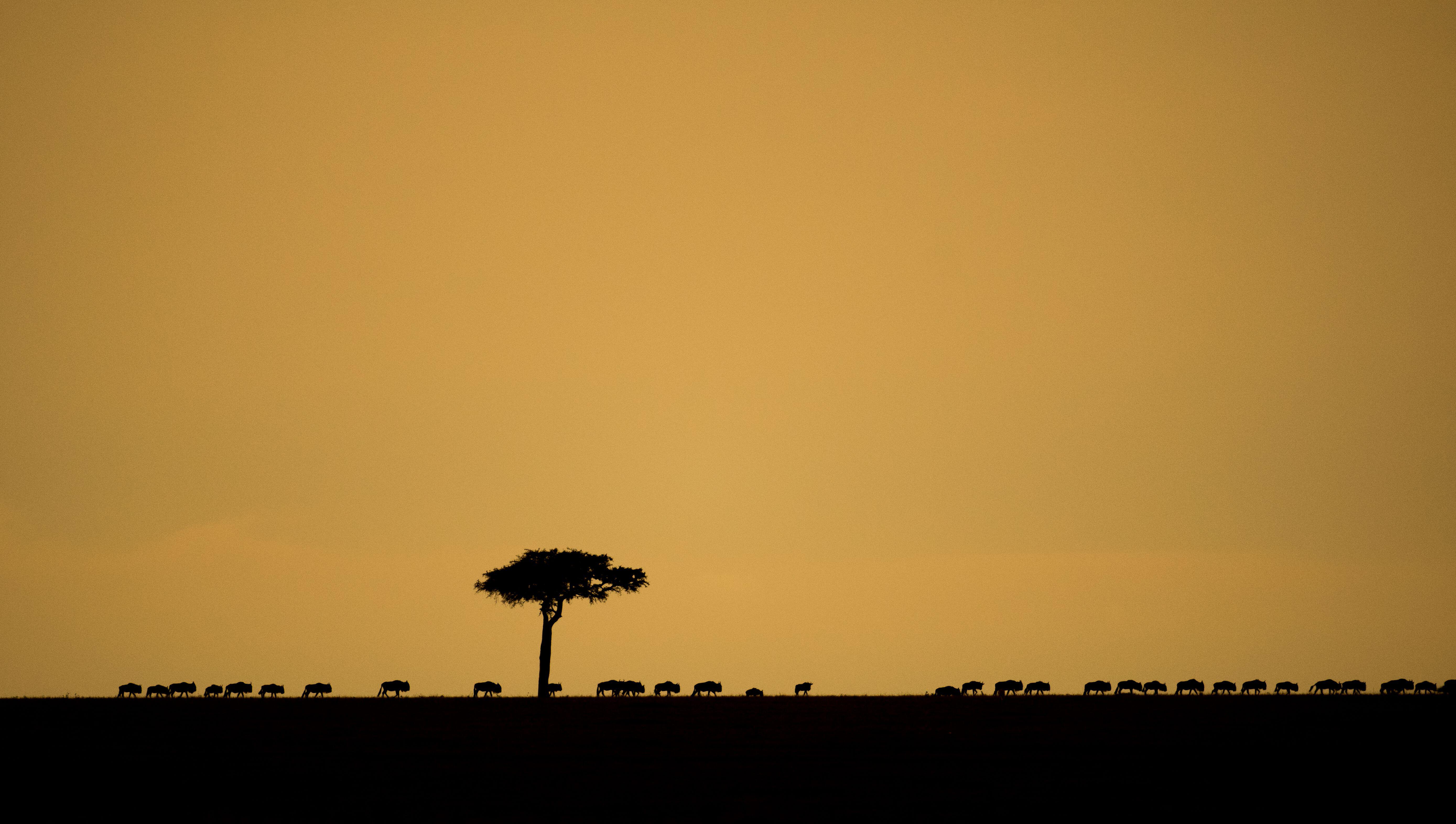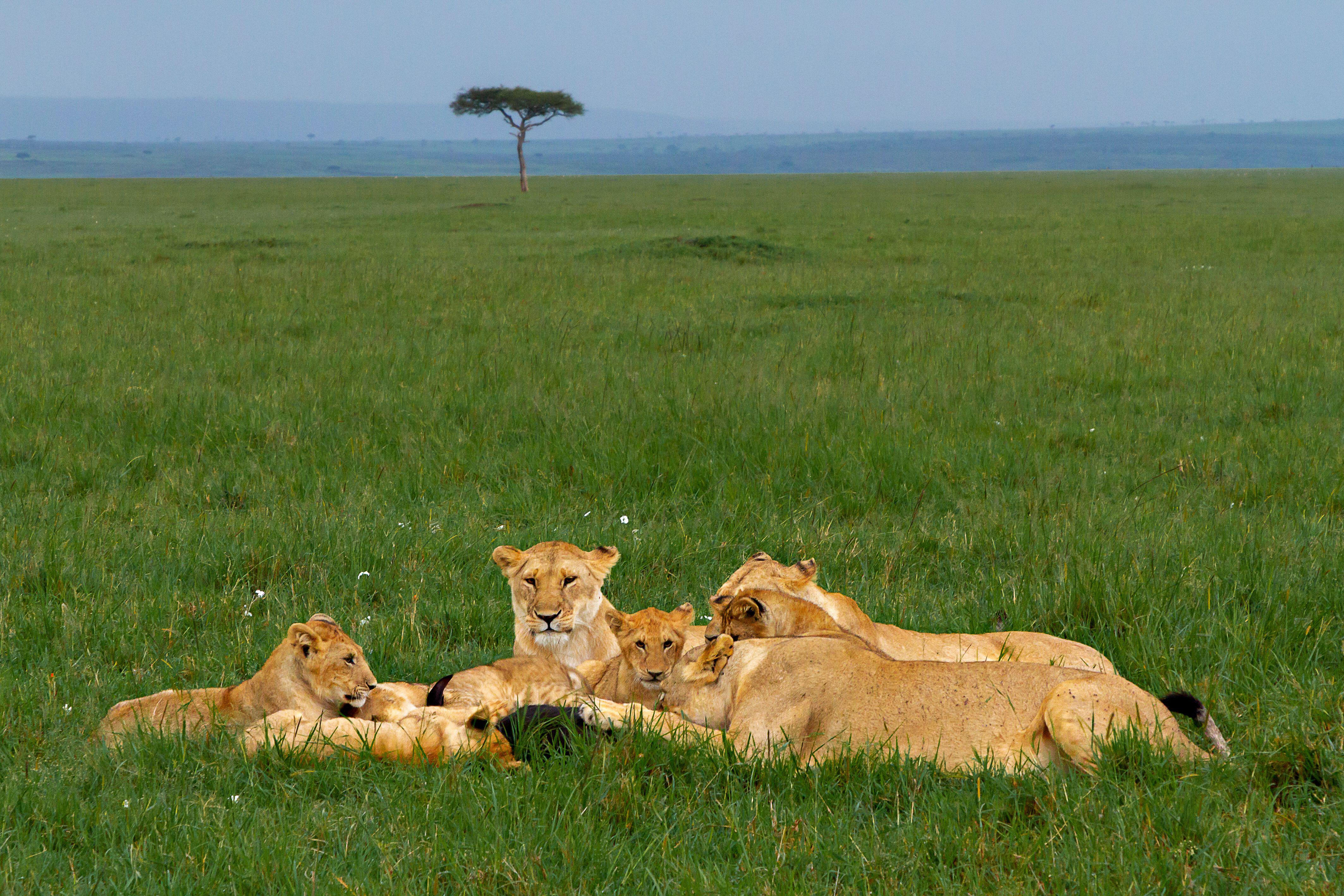A thick black line runs along the horizon, moving at a slow and steady pace. Without any definitive beginning or end, it seems to stretch for infinity, a bold marker that will underscore the skyline for several months.
This parade of ‘black ants’ has travelled from Tanzania’s Serengeti National park to reach the vast plains of Kenya’s Masai Mara National Reserve, following the smell of rain and fresh pastures.
As we draw closer, a chorus of see-sawing moos grows louder, and a rising sun backlights the fine flowing beards and shiny curved horns of several hundred wildebeest.
Staring through his binoculars, my safari guide, Jackson, grins and nods his head: “The Great Migration has arrived.”
Every year, more than 1.5 million wildebeest arrive in the Mara, accompanied by thousands of zebra and gazelles. One of Africa’s last big movements of animals is in constant rotation around neighbouring Tanzania’s Serengeti ecosystem, but it’s their arrival across the Sand and Mara rivers bordering both countries that draws the biggest crowds.

Read more on Africa travel:
In an epic knife-edge spectacle, animals charge across crocodile-infested waters, dodging the claws of predatory lions waiting in ambush, to reach new grazing grounds.
“They’ve arrived earlier than usual and in big numbers,” explains Jackson, predicting a bumper year.
Although I don’t see a crossing during my short visit, signs of the migration are everywhere. Driving across the Mara’s plains, we encounter several lions – a honeymoon pair mating, a lone lioness stalking prey, young cubs cruelly tormenting a freshly killed wildebeest calf.

“Predators follow the migration,” explains Jackson, who grew up in nearby town Aitong and now works for the Asilia safari company. “Even beyond the river, there’s always a lot of action at this time of year.”
It’s no surprise this is the busiest period for tourism in the Mara. In the past, horror stories of overcrowding and bad behaviour along the river – from driving right up to the crumbling clay banks to blasting loud music – have marred the experience.
New regulations introduced by authorities this year aim to reduce those problems, and so far, they seem to be working. Harsher fines have curbed…
Click Here to Read the Full Original Article at The Independent Travel…
